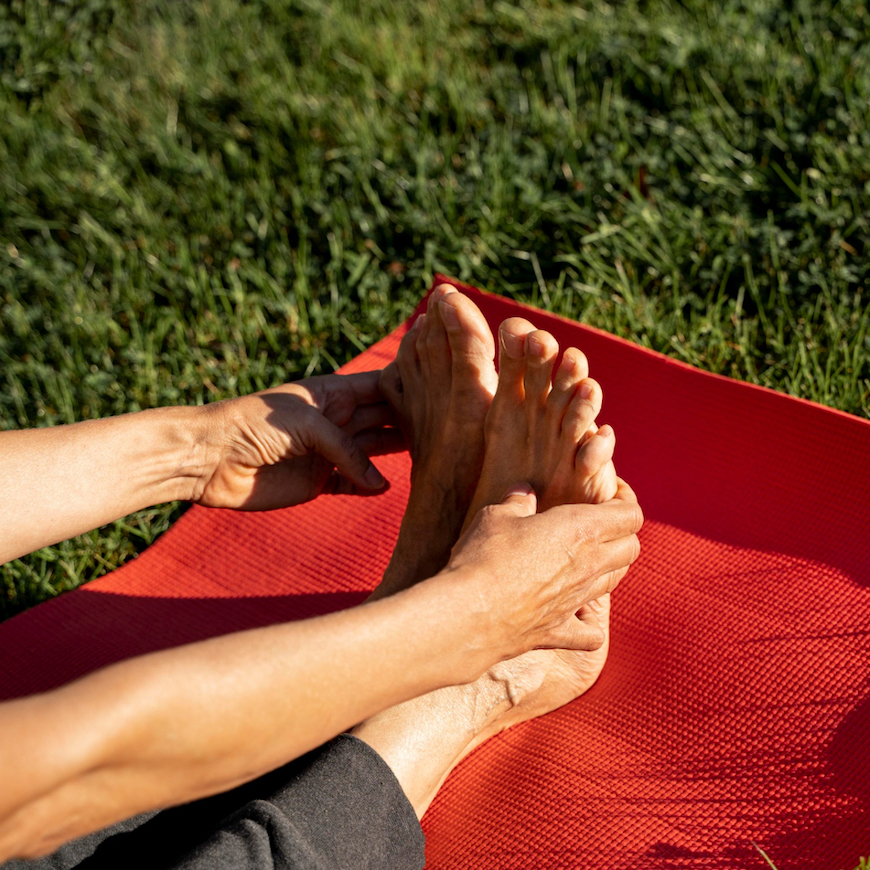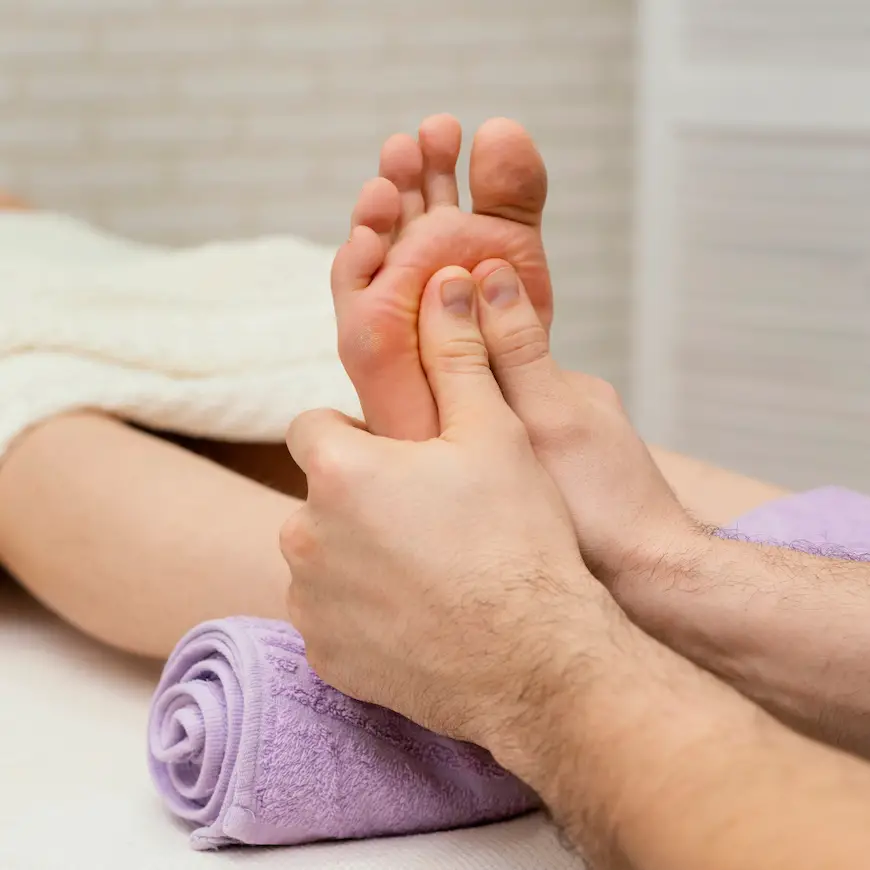That Nagging Ache: A Practical Guide to Big Toe Joint Pain
It’s funny how the smallest parts of our body can cause the biggest problems. Take your big toe. You rely on it for balance and movement with every single step, but you likely never give it a second thought—until it starts to hurt. Suddenly, that sharp throb or stiff ache in your big toe joint can make walking, running, or even standing feel like a monumental task.
If you’re experiencing big toe joint pain, know that you’re not alone. This hardworking joint takes a lot of punishment, making it prone to a number of issues. Let’s break down what your toe might be trying to tell you and explore the practical steps and helpful products you can use to find lasting relief.
What’s Causing My Big Toe Joint Pain?
Understanding the root cause of your big toe joint pain is the key to treating it effectively. Here are some of the most common reasons for that painful joint.
Bunions (Hallux Valgus)
A bunion is a bony lump that develops on the side of your big toe joint. It’s a progressive deformity where your big toe begins to lean inward, forcing the joint to jut out. This misalignment creates pressure and friction inside your shoes, leading to chronic inflammation, soreness, and persistent big toe joint pain. While tight footwear can make them worse, bunions are often linked to your unique foot structure and genetics.
Gout
Have you ever woken up to a big toe that feels like it’s on fire? Gout could be the culprit. This form of inflammatory arthritis causes sudden and excruciating pain attacks, often targeting the big toe joint first. Gout is triggered by the buildup of tiny, needle-like uric acid crystals within the joint. Your body’s inflammatory response to these crystals causes intense swelling, redness, and a joint that is incredibly tender to the touch.
Arthritis (Hallux Rigidus)
If your primary complaint is a stiff, aching toe that refuses to bend properly, you may have hallux rigidus, which literally means “stiff big toe.” This is the most common form of arthritis to affect the feet, caused by the “wear and tear” that breaks down the smooth cartilage cushioning your joint. As the cartilage disappears, bone grinds against bone, leading to pain, inflammation, and the growth of bone spurs that further limit movement.
Turf Toe & Other Injuries
As the name suggests, “turf toe” is common among athletes. It’s a sprain of the big toe joint that occurs when the toe is hyperextended, or bent back too far. This action can stretch or tear the ligaments supporting the joint, causing immediate pain and swelling. Other direct injuries, like stubbing your toe hard or dropping something on it, can also cause fractures or sprains that result in significant big toe joint pain.
Sesamoiditis
Underneath your big toe joint are two tiny bones, each about the size of a pea, called sesamoids. They are embedded in a tendon and act as pulleys to help the toe move. When this tendon and the sesamoids become inflamed from overuse—common in runners and dancers—it’s called sesamoiditis. This condition creates a dull, nagging pain in the ball of your foot directly beneath the big toe joint.
Read also: Best Ways to Relieve Osteoarthritis Pain
At-Home Strategies for Relief
For many people, the path to recovery can begin with simple, proactive care at home.
- Follow the R.I.C.E. Method: For acute pain and swelling, this classic approach works wonders. Rest your foot, apply Ice for 20 minutes at a time, use a bandage for gentle Compression, and Elevate your foot above your heart.
- Rethink Your Footwear: This is non-negotiable. Choose shoes that give your toes plenty of room to spread out (a wide toe box). Look for soles that are firm or have a slight “rocker” bottom, as this design reduces how much the toe joint has to bend when you walk.
- Gentle Movement: As long as it isn’t causing sharp pain, try gently stretching your big toe. You can do this by carefully pulling it up, down, and to the side to help maintain flexibility.
- OTC Pain Relief: Nonsteroidal anti-inflammatory drugs (NSAIDs) like ibuprofen can be effective for temporarily reducing both pain and inflammation.
Helpful Products You Can Find on Amazon
Supplementing your home care with the right products can make a significant difference. Here are some types of items you can search for on Amazon that are designed to help with big toe joint pain.
- For Swelling and Acute Pain: Reusable Foot Ice Packs
- How it helps: Instead of a clumsy bag of frozen peas, these wraps are specifically shaped for your foot. They often come with velcro straps, allowing you to apply cold therapy and gentle compression hands-free, which is perfect for targeting swelling right at the joint.
- 🛒 Check it on Amazon
- For Bunion Relief: Silicone Toe Separators & Bunion Pads
- How it helps: Toe separators fit between your big toe and second toe to help gently realign the joint and prevent painful rubbing. Bunion pads or shields are soft gel sleeves that fit over the big toe, providing a cushion between the sensitive bunion and your shoe to reduce friction and irritation.
- 🛒 Check it on Amazon
- For Arthritis (Hallux Rigidus): Carbon Fiber Shoe Inserts
- How it helps: The primary goal for relieving arthritis pain is to limit painful joint motion. A thin, rigid carbon fiber insert slips into your shoe underneath the existing insole. It effectively makes the sole of your shoe much stiffer, preventing your big toe joint from bending excessively while you walk.
- 🛒 Check it on Amazon
- For Sesamoiditis: Metatarsal Pads
- What to search for: “Metatarsal pads” or “dancer’s pads.”
- How it helps: These adhesive-backed pads are made of gel or felt and stick directly to your foot or your shoe’s insole. You place them just behind the ball of your foot, which helps to offload pressure from the painful sesamoid bones, providing significant relief during activity.
- 🛒 Check it on Amazon
When to Call a Doctor
It’s important to seek professional medical advice if:
- You have severe pain, swelling, or bruising after an injury.
- The pain is so intense that you cannot put any weight on your foot.
- The joint is red, hot, and you have a fever, which could signal an infection.
- Your pain doesn’t improve after a week or two of consistent home care.
- You have diabetes, as foot problems can be more serious.
A doctor or podiatrist can provide an accurate diagnosis, sometimes using an X-ray, and recommend advanced treatments like custom orthotics, physical therapy, injections, or surgery if needed. Don’t resign yourself to living with big toe joint pain—take the right steps today to get back to moving comfortably.
J. Miles is a board-certified general medicine physician with over a decade of experience in delivering comprehensive care to individuals of all ages. With a focus on preventive medicine, holistic wellness, and chronic disease management.







